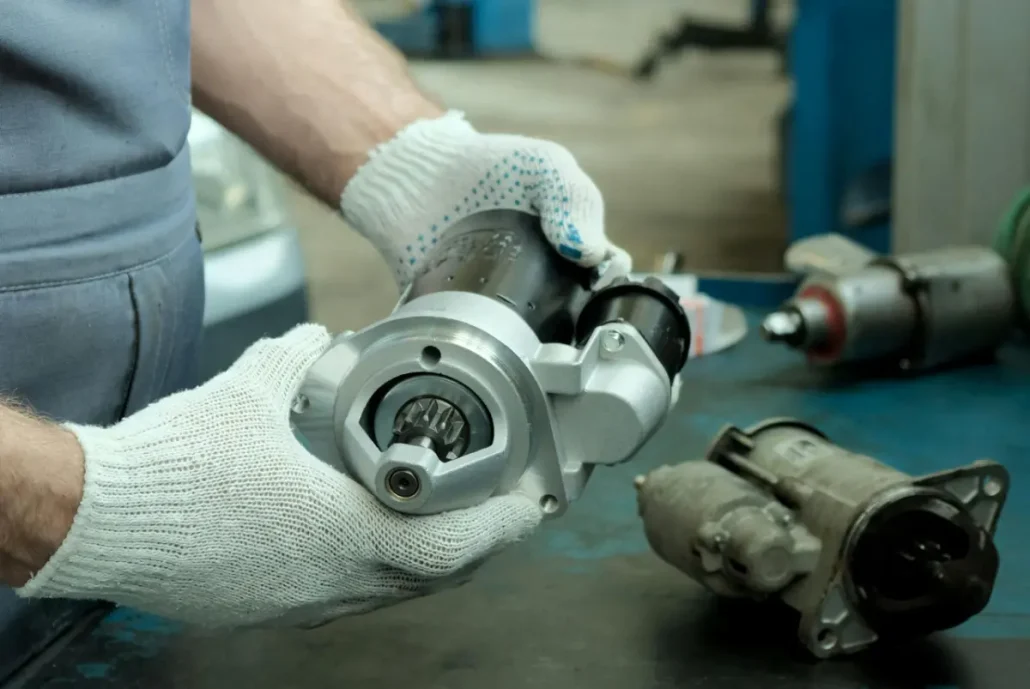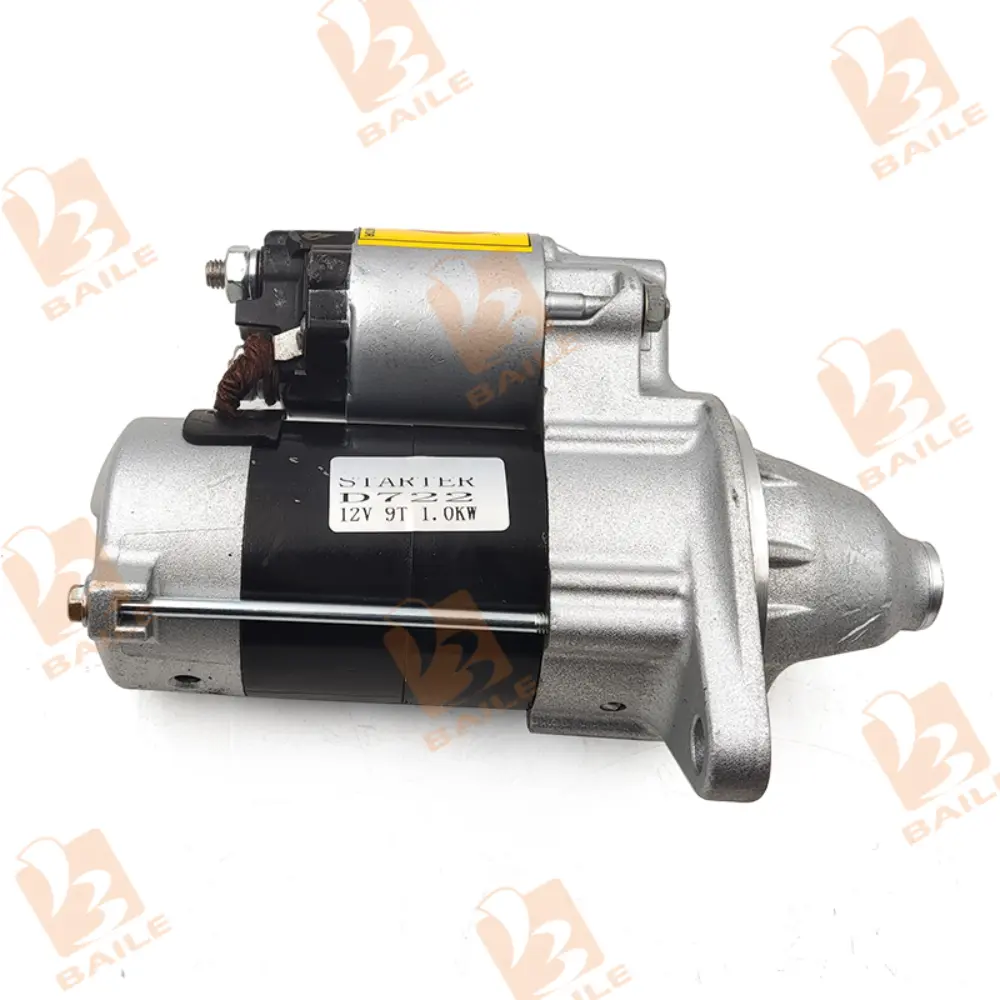In modern automobiles and construction machinery, the starter motor (also called the starter) is a vital component in the engine ignition system. It is usually driven by an electric motor, converting electrical energy into mechanical energy to provide the torque and speed required for engine starting.
This article will detail the functions, classifications, performance characteristics, common faults, and maintenance recommendations of the starter to help you better understand and maintain this key component.

The Function
The main function of the starter is to use electrical energy to drive the engine crankshaft to rotate when the engine starts so that the engine can reach the minimum speed at which it can operate on its own. In the ignition system, the starter is connected to the battery. After receiving the start signal, it quickly converts electrical energy into mechanical energy to drive the engine to run and complete the starting process.
Simply put, without a starter motor, the engine cannot start.
Classification
Based on the different structures and working principles, starter motors are mainly divided into the following categories:
- DC motor starter motor: a common type of starter motor, that uses DC to drive the motor. Widely used in traditional automobiles, with simple structure and low cost.
- AC motor starter motor: has high starting torque and efficiency, mainly used in large machinery and equipment.
- Hydraulic starter motor: provides power through the hydraulic system, often used in heavy machinery and engineering vehicles.
- Gear reduction starter motor: with reduction gear, greater torque. Suitable for heavy machinery and equipment or high-performance cars that require high starting torque.
- Brushless starter motor (Brushless Starter): no carbon brush wear problem, longer life, and more efficiency. Commonly used in high-end equipment.

Performance
A high-performance starter motor should have the following characteristics:
High starting torque: It can provide sufficient torque in a short time to ensure a smooth engine start.
Quick response: The starting speed is fast, and the engine reaches a high enough speed in a short time so that the engine can run on its own.
Reliability: The starter must have a high degree of reliability and can operate efficiently under cold start and load conditions.
Durability: The structure is reasonably designed and has a long service life. The starter motor is frequently used and can withstand long-term operation without damage.
These performance characteristics directly affect the performance and reliability of the starter motor in actual use.
Common signs of failure
| Signs | Reason |
| The starter motor does not respond | The battery is low or the voltage is too low. The power line connection is loose or broken. The ignition switch or starter relay is faulty. Internal fault of the starter motor, such as severe wear of the carbon brush. |
| When the ignition key is turned, the starter motor does not move at all and the engine cannot start. | |
| The starter motor is weak | Battery power is low. Poor contact in the power line. Mechanical wear or an electrical fault inside the starter motor. |
| The starter motor rotates slowly and the engine is difficult to start. | |
| Starter motor idling | The starter motor drive gear does not mesh properly with the flywheel ring gear. One-way clutch failure. Improper installation position of the starter motor. |
| The starter motor runs, but the engine does not rotate. | |
| The starter continues to run | The ignition switch is faulty and fails to disconnect the starter motor circuit. The starter solenoid switch is stuck. The one-way clutch is damaged and cannot disconnect the transmission. |
| After the engine starts, the starter motor continues to run. | |
| Abnormal noise during starting | Poor meshing of the starter motor gear with the flywheel ring gear. Loose starter motor installation. Worn or damaged internal components. |
| An abnormal metal collision or sharp noise is heard during starting. |
By understanding the different signs, you can narrow down the possibilities of the fault and effectively solve the root problem.
Maintenance and care of the starter motor
If you want to extend the service life of the starter motor and make it run normally and long-term, you can’t do without regular inspection and maintenance:
- Check the battery regularly: Make sure the battery is fully charged and the wiring is firm to avoid starting failure due to power problems.
- Clean the starter motor: Regularly remove dust and oil from the surface of the starter motor to prevent impurities from entering the interior.
- Pay attention to the starting sound: Abnormal sound is an early fault signal and should be repaired in time;
- Check the brushes and commutator: Regularly check the wear of the brushes and replace them if necessary; Keep the commutator surface clean to ensure good contact.
- Lubricate the bearings: Regularly add lubricating oil to the bearings of the starter motor to reduce friction and extend the service life.
- Avoid frequent starting: Try to avoid starting the engine multiple times in a short period to reduce the load on the starter motor.
- Regular inspection: Regularly inspect and maintain the starter motor
- Parts replacement: If the starter motor fails, replace the faulty parts or the entire starter motor.
As a professional engine parts supplier, Baileparts provides high-quality starters and related accessories to meet the needs of various models and working conditions. We are committed to providing customers with reliable products and quality services to help your vehicles and equipment run efficiently.
To learn more about starter motors or to choose products that suit your needs, please visit our official website baileparts.com, or contact our customer service team.

